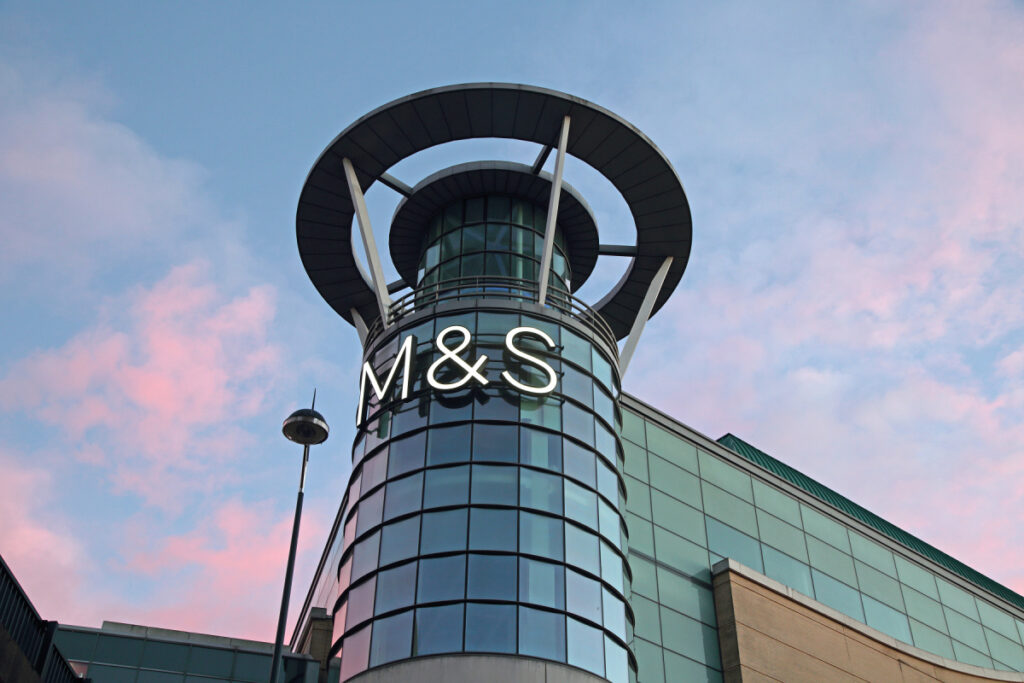Two Marks & Spencer‘s. Two very different stories. In the same week that the retailer opened a new Simply Food store in Braintree, Essex, one of the UK‘s oldest M&S fashion stores in Gravesend closed after being declared no longer “financially viable” by management. With the retail giant suffering its 12th consecutive quarter fall in clothing sales, M&S the clothing brand falls further into the shadows of its edible brother. Does this mark the end of M&S the department store and the beginning of M&S the supermarket?
Whilst a hostile market has been one of the reasons suggested for the 1.5 per cent fall in shares in general merchandise, the success of competitors such as Next do little to support this theory. Conlumino fashion analyst, Anusha Couttigane, highlighted why it is failing to capture the current market. She said: “As a fashion retailer, it seeks to target mature consumers with slightly higher disposable incomes and strong expectations of quality. Its ranges in recent years have struggled to do this… and it is now struggling to shake off a reputation for somewhat dowdy ranges.” A reputation probably strengthened by the news that a fifth of British men own a pair of M&S slippers.
But the retailer faces a conundrum. Attempts to shake off this image may have actually produced the effect of alienating current customers rather than attracting new ones. Couttigane adds: “Some have criticised its Vogue associations as alienating to loyal customers. The same could be said of some its marketing campaigns for menswear. Whilst M&S has an ongoing partnership with male supermodel David Gandy who, for the first time, has designed an underwear range for the company, he does not represent the typical male Marks shopper – certainly not in terms of age and style”.
Merchandising appears to be its real issue. It has struggled to differentiate its high-street fashion offer and has been compared to Primark in the press. “Its key pitfall is the way ranges come across to shoppers – often on cramped, overstocked rails and unattractive mannequin displays,” she says. “It perhaps doesn‘t help that the space allotted to menswear frequently clashes with kids ranges, returns counters, homewares and the like, especially at smaller outlets.”
It is very difficult to critique Marks and Spencer‘s food offer as it has gone from strength to strength over the past four years and has bucked the trend of declining clothes sales. Food sales rose 4.2 per cent in the first quarter of 2014 and are outperforming the grocery market. Dr Tim Dennison, director of retail intelligence of Ipsos retail performance praises its “ahead of the curve” strategy in investing in a new wave of Simply Food locations in train stations, airports and motorway service stations.
He said: “More consumers have very mobile lives where such hubs have a link role to play and picking up a lunch snack or an evening meal dish becomes a simple operation and a regular part of the weekly routine.”
More potent than the slippers statistic is that one in four families ate an M&S turkey last Christmas.
It successfully tailored its food ranges for key occasions such as Valentines, Father and Mothers day in response to more demanding consumers in the premium market. Perhaps most significantly, it has been well-placed to benefit from more shoppers splitting their weekly shop between discounters Lidl and Aldi and higher-quality retailers such as Ocado and M&S. He says its food range is big enough to offer real choice, but restricted enough to manage and praises its “well drilled” operations team, efficient queuing system and a fast, courteous service.
But despite these strong foundations serving the retailer well, is it looking over its shoulder at the progress Lidl and Aldi are making in the luxury market? Lidl‘s 217 line deluxe range won own brand of the year at the Retail
RELATED STORIES

















